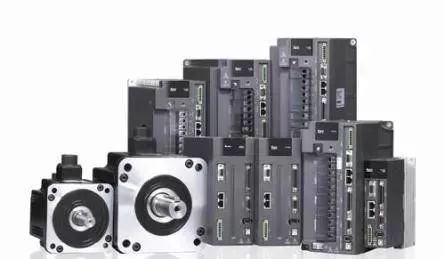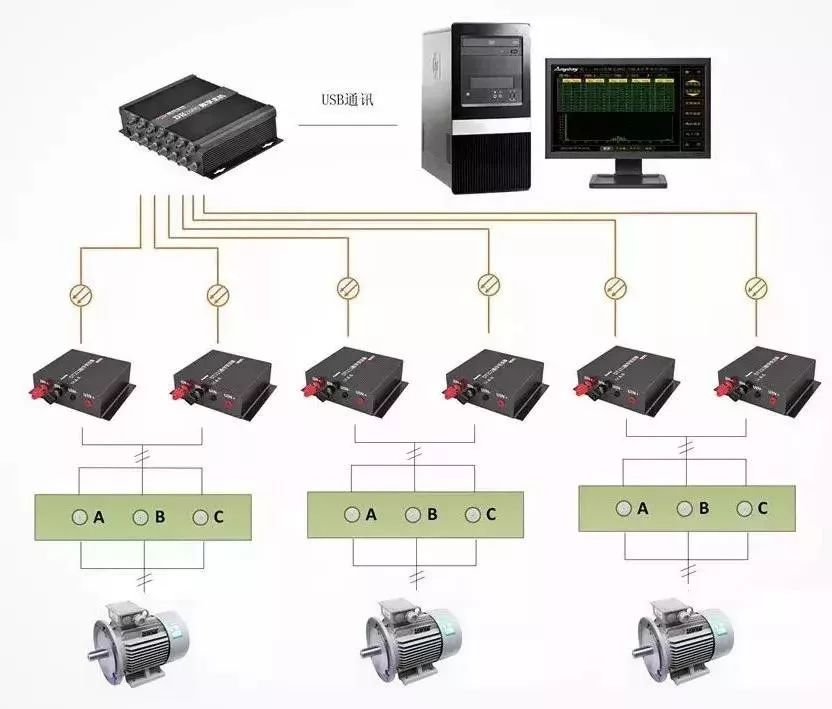What is the difference between servo motors, variable frequency motors, and ordinary motors?
2022.03.10
The basic concept of servo is accurate, precise and fast positioning. Frequency conversion is a necessary internal link of servo control, and there is also frequency conversion in servo drives (stepless speed regulation is required).
But the servo closes the current loop speed loop or the position loop for control, which is a big difference. In addition, the structure of the servo motor is different from that of the ordinary motor, which needs to meet the fast response and accurate positioning.
Most of the AC servo motors circulating on the market are permanent magnet synchronous AC servos, but this kind of motor is limited by the process, it is difficult to achieve a large power, and the price of synchronous servos of more than ten KW is extremely expensive, so it is allowed to be used in field applications. In the case of AC asynchronous servo, many drives are high-end inverters with encoder feedback closed-loop control.
The so-called servo is to meet the requirements of accurate, precise and fast positioning. As long as it is satisfied, there is no competition for servo frequency conversion.

1. What they have in common
The technology of AC servo itself is to learn from and apply the technology of frequency conversion. On the basis of the servo control of DC motor, it is realized by imitating the control method of DC motor through the PWM method of frequency conversion. link.
Frequency conversion is to rectify the alternating current of 50 and 60 Hz of the power frequency into direct current first, and then through various types of transistors (IGBT, IGCT, etc.) that can control the gate electrode through the carrier frequency and PWM adjustment. Since the frequency is adjustable, the speed of the AC motor can be adjusted (n=60f/p, n speed, f frequency, p pole pairs).
2.Talk about the inverter
A simple inverter can only adjust the speed of the AC motor. At this time, it can be open-loop or closed-loop, depending on the control method and the inverter. This is the V/F control method in the traditional sense.
At present, many inverters have been established through the establishment of mathematical models to convert the UVW3 phase of the stator magnetic field of the AC motor into two current components that can control the speed and torque of the motor. Now most of the inverters of famous brands that can perform torque control are Using this method to control the torque, the output of each phase of UVW should be equipped with a current detection device of Hall effect, and after sampling feedback, the PID adjustment of the current loop of the closed-loop negative feedback is formed; ABB's frequency conversion also proposes a different direct torque control technology from this method. , please refer to the relevant information for details.
In this way, both the speed of the motor and the torque of the motor can be controlled, and the control accuracy of the speed is better than that of the v/f control. The encoder feedback can also be added or not. When adding, the control accuracy and response characteristics are much better.

3.Talk about the servo
In terms of driver: under the premise of developing frequency conversion technology, the current loop, speed loop and position loop (inverter does not have this loop) inside the drive have carried out more precise control technology and algorithm operation than general frequency conversion. It is also much more powerful than the traditional frequency conversion, and the main point can be precise position control.
The speed and position are controlled by the pulse sequence sent by the host controller (of course, some servos integrate a control unit or directly set parameters such as position and speed in the drive through bus communication), the algorithm inside the drive is faster and faster More precise calculations and better performance electronics make it superior to frequency converters.
In terms of motor: the material, structure and processing technology of the servo motor are much higher than those of the AC motor driven by the inverter (generally AC motor or various frequency conversion motors such as constant torque and constant power), that is to say, when the drive outputs current, voltage, When the frequency of the power supply changes rapidly, the servo motor can respond to the change of the power supply. The response characteristics and anti-overload capability are much higher than those of the AC motor driven by the inverter. The serious difference in the motor is also the fundamental difference in performance between the two. .
That is to say, it is not that the inverter cannot output the power signal that changes so fast, but the motor itself cannot respond, so the corresponding overload setting is made to protect the motor when the internal algorithm of the inverter is set. Of course, even if the output capacity of the inverter is not set, the output capacity of the inverter is still limited, and some inverters with excellent performance can directly drive the servo motor! ! !
4.Talk about the AC motor
AC motors are generally divided into synchronous and asynchronous motors:
1. AC synchronous motor: that is, the rotor is made of permanent magnet material, so after the rotation, with the change of the rotating magnetic field of the motor's stator, the rotor also responds to the frequency of the speed change, and the rotor speed = the stator speed, so it is called "synchronous" .
2. AC asynchronous motor: The rotor is composed of induction coils and materials. After rotation, the stator generates a rotating magnetic field, the magnetic field cuts the induction coil of the stator, the rotor coil generates an induced current, and then the rotor generates an induced magnetic field, and the induced magnetic field follows the change of the rotating magnetic field of the stator, but the change of the magnetic field of the rotor is always smaller than that of the stator.
Once it is equal to the magnetic field that does not change, the induction coil of the rotor is cut, and there is no induced current in the rotor coil, the rotor magnetic field disappears, the rotor stalls and generates a speed difference with the stator, and the induced current is regained... So in the AC asynchronous A key parameter in the motor is the slip ratio, which is the ratio of the speed difference between the rotor and the stator.
3. Corresponding AC synchronous and asynchronous motor frequency converters have corresponding synchronous frequency converters and asynchronous frequency converters, and servo motors also have AC synchronous servo and AC asynchronous servo. Of course, AC asynchronous frequency conversion is common in frequency converters, and AC synchronous servo is common in servos.
5. Application
Due to the difference in performance and function between inverters and servos, the applications are not quite the same:
1. In the occasions of speed control and torque control, the general frequency inverter is not very demanding, and there are also inverters that add position feedback signals to the upper position to form a closed-loop frequency conversion for position control, and the accuracy and response are not high. Now some frequency converters also accept the pulse train signal to control the speed, but it seems that they cannot directly control the position.
2. In the occasions with strict position control requirements, it can only be realized by servo, and the response speed of servo is much higher than that of frequency conversion. In some occasions with high requirements for speed accuracy and response, servo control is also used, and frequency conversion control can be used. It can be replaced by servo in almost all sports occasions. The key is two points: one is that the price of servo is much higher than that of frequency conversion, and the other is the reason for power: the largest frequency conversion can achieve hundreds of KW or even higher, and the largest servo is only a few Ten KW.
6.Why can't ordinary motors be used as variable frequency motors?
Ordinary motors are designed according to constant frequency and constant voltage, and cannot fully meet the requirements of frequency converter speed regulation, so they cannot be used as frequency conversion motors.

◆The influence of the frequency converter on the motor is mainly in the efficiency and temperature rise of the motor
The inverter can generate different levels of harmonic voltage and current during operation, so that the motor runs under non-sinusoidal voltage and current. , The most significant is the rotor copper loss, these losses will make the motor extra heat, reduce the efficiency, reduce the output power, and the temperature rise of ordinary motors generally increases by 10%-20%.
◆The problem of the insulation strength of the motor
The carrier frequency of the frequency converter ranges from several thousand to ten kilohertz, so that the stator winding of the motor has to withstand a high voltage rise rate, which is equivalent to applying a steep impulse voltage to the motor, which makes the inter-turn insulation of the motor withstand a more serious test. .
◆Harmonic electromagnetic noise and vibration
When an ordinary motor is powered by a frequency converter, the vibration and noise caused by electromagnetic, mechanical, ventilation and other factors will become more complicated. The harmonics contained in the variable frequency power supply interfere with the inherent space harmonics of the electromagnetic part of the motor to form various electromagnetic excitation forces, thereby increasing the noise.
Due to the wide operating frequency range of the motor and the wide range of rotational speed variation, it is difficult for the frequencies of various electromagnetic force waves to avoid the natural vibration frequency of each structural member of the motor.
◆Cooling problem at low speed
When the frequency of the power supply is low, the loss caused by the high-order harmonics in the power supply is large; secondly, when the speed of the motor decreases, the cooling air volume decreases in proportion to the cube of the speed, resulting in the heat of the motor not being dissipated and the temperature rising sharply. increase, it is difficult to achieve constant torque output.
Previous:German assembly technology, with assembly technical requirements - heavy knowledge!
Next:Bearings want to be assembled, these basics must be kept in mind
Related Information
- Industry news
- The tap or drill bit breaks in the hole, how to fix it?
- Why do airplanes use rivets instead of welding?
- Why are engineering drawings all blueprints?
- How is a ping pong ball made? It turns out that it is made of two pieces of plas
- What to do if quality is abnormal? Doing these 3 things well is the key!
- Weekly News 9.7-9.13
- Huawei's three-fold screen is approaching, and the domestic supply chain is wait
- Innovative application of digital twin technology in integrated die-casting prod
- 5 types of carbide cutting tools, what are the differences? Save this article an
- Global manufacturing PMI in June was 49.5% | Weekly News 7.6-7.12
- Raw material defects | Machining special operations and practical cases 109
- No wonder Toyota stamping is so good: a day in the life of a Toyota stamping sho
- Analysis on the development trend and demand of China's mold industry
- How many types of sealing rings are there in machinery? What are they used for?
- Hangfa, Hangfa, a scar on the hearts of machine processing workers
- How to mill a large arc surface with a small cutter?
- Dynamics of the processing center of the process! What is the fundamental reason
- 500 ° C ultra -strong aluminum alloy! This problem is overcome
- How much do you know about the hometown of machine tools and molds, how much do

 BACK
BACK MT HOME
MT HOME Navbar
Navbar